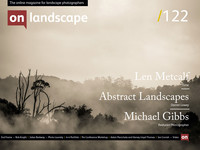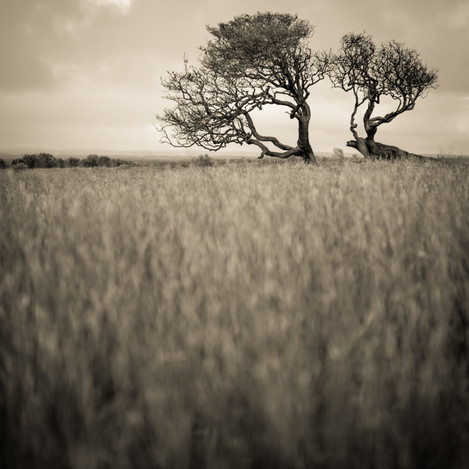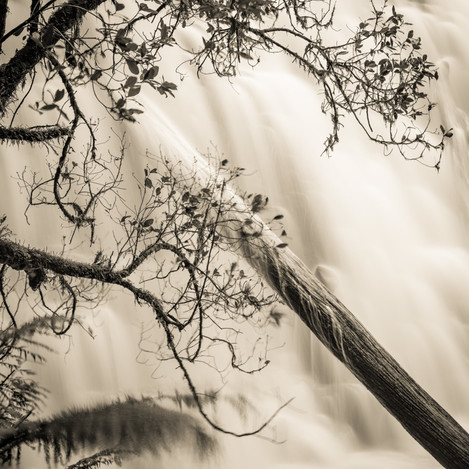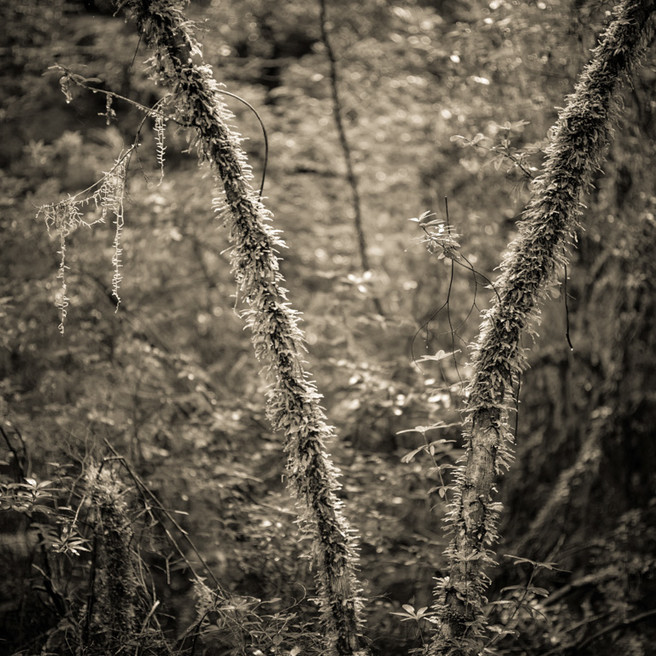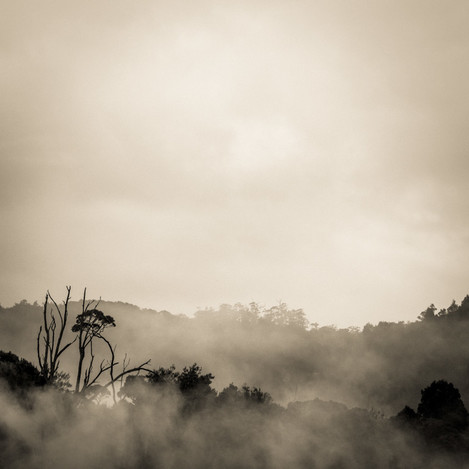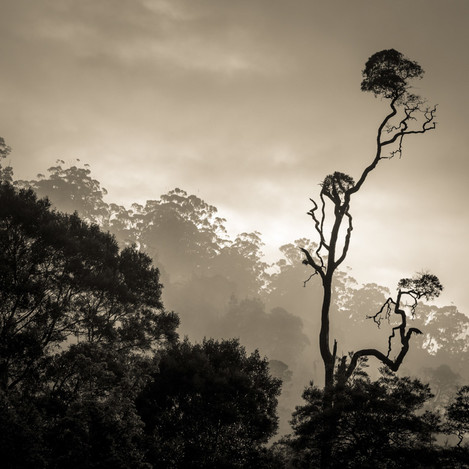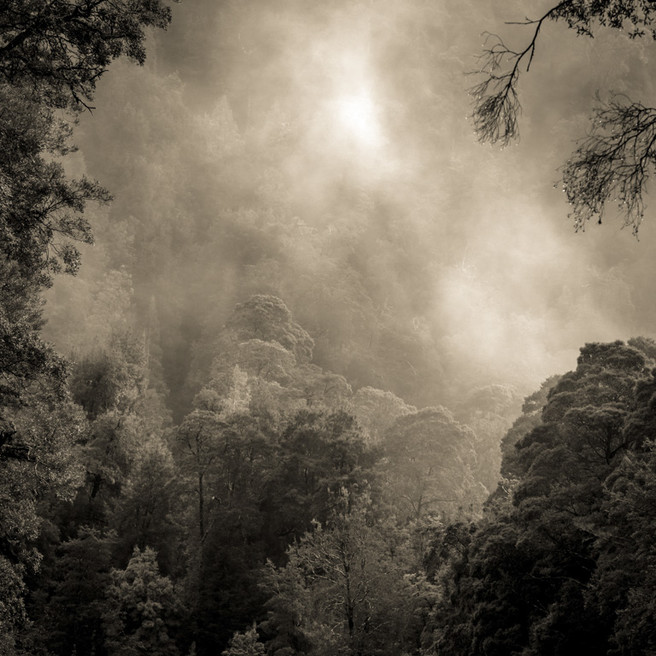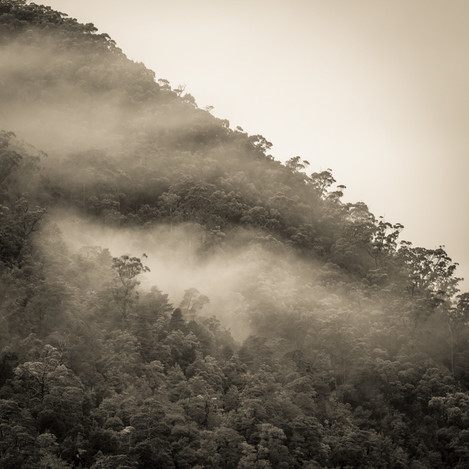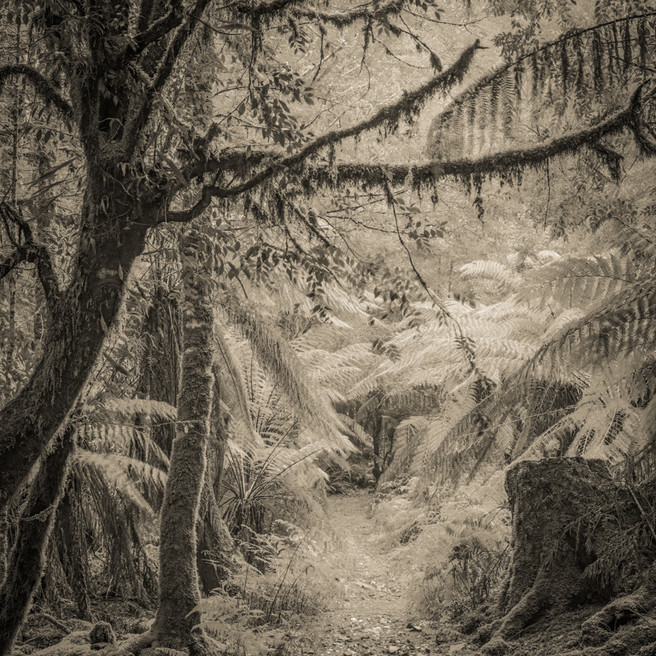Len ponders the importance of time in his photography….

Len Metcalf
Len is a photography educator and art teacher. He is the director of Len's School located in Sydney, Australia, which offers a wide range of online courses from year-long photography masterclasses to shorter composition and drawing courses. Len’s School offers innovative small group workshops and tours for dedicated amateur photographers who wish to grow.
Len publishes Len’s Journal which celebrates creative photography quarterly and is only available via subscription.
Len exhibits his photography regularly and is widely published. His intimate portraits of people and nature show a unique and very personal vision of the beauty of the world though his photographic art.
I am finding myself using ‘time’ as an answer to so many questions asked to me by various photographers and visual creatives. Besides the obvious one about exposure, it has become a very clear answer to some very important photographic questions. So what follows is a discussion of a couple of these questions that ‘time’ is my answer for.
“What makes a great photograph?”
This is the most asked question of me at my various workshops, talks and photography tours. Inevitably I find myself explaining that time is the best judge. If I like a photograph today, and I still like it tomorrow, I have a nice photograph. If my love for this photograph keeps growing and I like it even more in a months time, I have a good photograph. If my love for it continues to grow and I love it even more in a years time, I probably have a great photograph.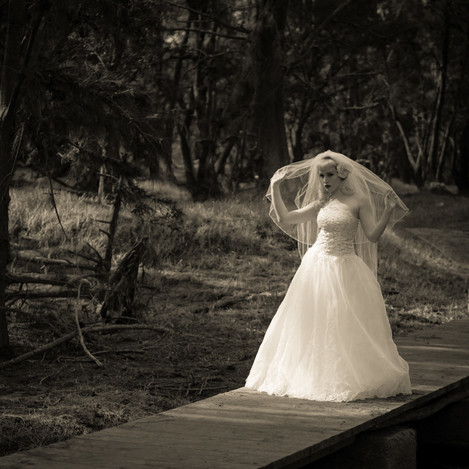
If your audience and peers love your photograph today, that is a good thing. But if they still love it in a year, then it is a good photograph. If they still remember it and love it after ten years, you know that you have a great photograph. Many photographers dream to create at least one iconic image that stands the test of time. I know it is one of my clear goals with photography and the rewards of having done so are hard to explain. The creation of something iconic is certainly worth the effort to create them.
One caveat here is worth explaining. You may take a photograph of a loved one, or of a moment in your life that is very important to you. The photograph in question may anchor you to that person or event. With time, your are still going to love this photograph, regardless of how good it is. It is always going to be special to you. Your feelings may change over time, and will reflect your current attitudes to the original. To you, this type of photograph will always be great, which I believe is a very valid thing. Just don’t try to pass them off as your best works of art.
Many photographers print out their work and put it up in their house or studio. I love to do this so I can keep revisiting this photograph over time. I can contemplate it, ponder it. Figure out if it needs more work. I can devise a ‘fix it’ plan. I can decide if it is resolved or not. I can decide if I am going to exhibit it. At art school, we would try to speed up this process with a coffee and a cigarette. I think we only imagined that it worked, as an excuse to socialise yet again. The best thing to do is to give your photographs some real time. I might leave a work up for a while. I might even put it away for a while before pulling it out again and contemplate it again. Give your photographs time to grow on you or to allow to fade out of circulation.
For many, this explanation isn’t really good enough on what makes a good photograph. So I often go on to explain that a good photograph wants you to keep looking at it. It demands your time. The longer you keep looking at it, the better it is.
This is where all the beautiful things like composition, edge awareness, holding the viewer's attention come into play. Steering the viewer's eye around the photograph; Having a clear subject; having little details to discover; include errors in there to show your human and that life isn’t perfect. They all relate to this one point. When you do it well, the viewer's eyes want to keep looking at the photograph. They stay in there; they circle around. They dance in the highlights and the main points of interest. The photograph gets you thinking, contemplating, and gives you feelings. You stay with it. You want to stay with it. You want to linger.
A good photograph keeps you looking at it. A great one can repeatedly capture your attention over time. Simply, the longer you want to keep looking at the photograph, the better it is.
“How do you become a better judge of your work?”
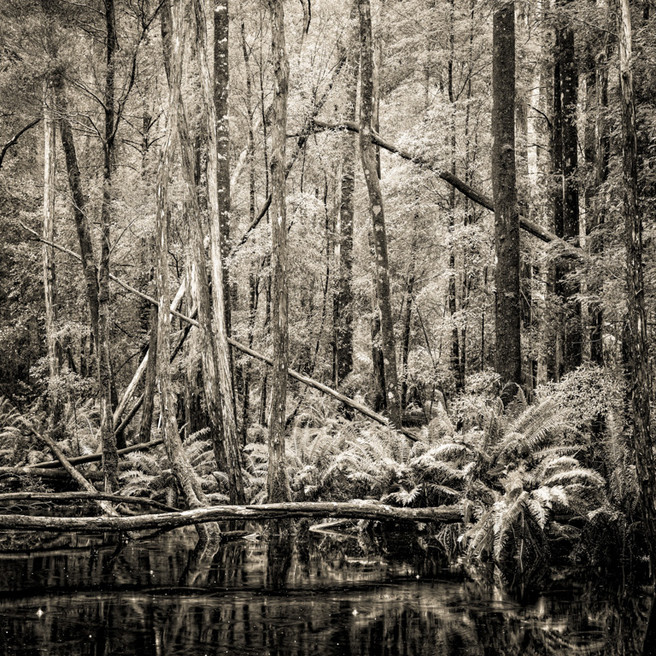 Yesterday I looked through a shoot I had done two years ago. It was a brief shoot with a friend who I was trying to inspire back into photography. We were lucky enough to have a fine art nude model staying at my home for a while, so I organised a morning shooting. He is a retired wedding photographer, and he rolled out his film cameras. I dug into my film supplies and pulled out a few rolls of 120. We wandered down to the local reserve and shot by the water. Lovely sandstone rocks, distant natural Sydney harbour views, water and a stunning professional model to work with. After the shoot, I had gone through my images.
Yesterday I looked through a shoot I had done two years ago. It was a brief shoot with a friend who I was trying to inspire back into photography. We were lucky enough to have a fine art nude model staying at my home for a while, so I organised a morning shooting. He is a retired wedding photographer, and he rolled out his film cameras. I dug into my film supplies and pulled out a few rolls of 120. We wandered down to the local reserve and shot by the water. Lovely sandstone rocks, distant natural Sydney harbour views, water and a stunning professional model to work with. After the shoot, I had gone through my images.
That was a long while ago. So yesterday I wander through the photographs again. I no longer rate my images. I just five stars the ones I work on and red label the ones I really really love. So without any memory of my last viewing and only the vaguest distant memory of the shoot I look through the images again. I look slowly and with enjoyment. I am searching again. And suddenly there it is. Jumping out of my screen, yelling at me. An amazing shot. I quickly process her and make a few variations. One version stands out. Though many are more than acceptable. I quickly post it and show my friends and fans. The loves and comments grow quickly, and this image far outstrips the acknowledgement of the earlier works I had chosen to show the world. Yet again I have discovered a gem within my work.
A gem that I had missed the first time around. This happens to me regularly, and consistently in my work. So I have had to adapt my work flow around it. No longer I rate every photo. No longer do I make decisions that seem to be final. I browse quickly, choose something and show people. Then I let them sit and saviour for a while. A long while. For a very long time if I can. Then I delve back into them to see what I can find.
This is about our emotions getting caught on the taking. When we take an image, we have all of these expectations about how it is going to look. How it is going to turn out. We are trying for something, and certain angle or idea. And when we look at the result with that memory in our minds, we are prone to be disappointed with the final result. We have trouble seeing it for what it really is. We judge it on what we wanted it to be.
The best way to do deal with this is time. Of course, there are other methods, such as using other people to help you judge your work. But for me, choosing my work is a personal thing. Something that I want to be in control of. So my answer to this is to use time. The longer I can leave my photographs sit before I judge them the better. If I can revisit shoots I did a few years ago and found better work in there, then I will and I do. Try it for yourself. Go back to a very old shoot. And revisit your choices. I would recommend making a duplicate collection and removing your rating system so it doesn’t influence you on this revisit. Now look for the gem. There is one in there. One that is better than all the others that you have already processed and sent out into the world. Now you have me wondering what you have found.
Garry Winogrand would deliberately leave his films for a year or two before developing them, and even longer before contact proofing them and evaluating. This was so that he had no memory of taking them. He was distancing himself emotionally from them. He readily acknowledged the problems of having his emotions of taking them being confused with his critical evaluation of them. He had over two and a half thousand rolls of undeveloped films in a bin when he died. His catalogue has over five and half million images in it.
“How do you find your photographs?”
I love to spend time with a place and see which photographs come to me. Which things inspire me. The longer I spend in a place, the more connected I become with it.
Time also allows me to dissociate myself from my stresses and realities of every day life. Peter Dombrovskis used to walk for a couple of days into the wilderness before he started using his camera. I personally think that he had to clear his head, relax and get in touch with the landscape and mother nature.
I am no different. It takes me time to get to know a place. I love to linger. Spend lots of time there. Sit relax and contemplate.
I revisit locations. I keep going back. Gordon Undy talks about making a connection with a place through making a successful image there. If you get one keeper from a place, then that will drive you back there to get some more. Once you make a visual connection with a place, you can then continue to explore it.
My favourite thing is to go back to a lovely spot and rephotograph it. Spend more time there. The better I know the place, the better my images are.
“How did you become a better photographer?”
Well, it takes time. It takes time to practice and to study. It takes time to mature and grow. It takes time to learn the software and how to use your camera.
As a beginner, you have to get through the stages of learning. From that conscious use of the camera to unconscious competence. I like to be at one with my camera so that my camera isn’t in my way. Or more accurately so I am not in my cameras way. If you're not following that one, I will leave that discussion for another day.
The more regularly you practice your craft and your art, the better you will become. The more familiar you will become with your tools and with what is possible. A huge part of photography is learning that the camera is a tool to help you create. It doesn’t just replicate what is in front of you. You have to learn its potential. What it can do. You have to learn to manipulate its strengths, to embrace its limitations. To learn to see how it sees. This all takes time and practice. They say that to become a master in your field; it takes ten thousand hours of practice. If that is even half true, that is still a huge amount of time you will need to devote to photography.
Luckily you can practice your photography without a camera. You can take photographs in your mind. You can research photography while surfing the web, reading a magazine or while engrossed in a book. What you need to do is analyse the photographs and artworks of others, and practice taking pictures in your mind.
I didn’t really understand that life makes you a better photographer until I really experienced it. I put my camera down for over ten years, from the moment I graduated art school until I picked up a point a shoot and started my first real personal project. In those ten years, I kept painting, taking photographs in my head. I studied and loved art. I visited art galleries and became engrossed in art exhibitions. In that time I became better. So so much better, I had to stop and figure out what it was so that I could understand it. The answer in the end was time. Life makes you a better photographer.
I practice regularly. I will organise at least one day out a week shooting. Usually with other people, models mostly, but often with other photographers. I would like to do this twice a week. When I go on holiday, I shoot daily. Not all day every day. But at my favourite times, when the light is beautiful or when I am in places that inspire me to photograph. When on tour I photograph all day every day. And when I am not photographing I am reading about photography, studying and learning.
The more knowledgeable I become about photography, the better my work becomes. I also consume photography, art and design obsessively. Art gallery visits as often as I can fit them in. New books filled with amazing portfolios sit everywhere I go to be consumed at every opportunity. I am taking in photographs daily. I am trying to build my subconscious bank of visual images with quality images. I look at work that I am not inspired to create. To see how they use the medium. Don’t ever stop building that visual library.
Len’s time tips
- The longer you leave your photographs after taking them before you evaluate them, the better. Avoid using a rating system that gives lesser images a lower score. This is to stop you discounting them at a future date. Revisit old shoots and search for photographs that appeal to your current aesthetic.
- Print your photographs out, and spend time with them. Make ‘fix it’ plans. Contemplate your work over time. Figure out if they are resolved or not.
- Spend time each day increasing your visual literacy. Study photography daily. Practice daily, even if it is without a camera. Immerse yourself in amazing photographic works that you love and adore.
- Spend time in a place. Get to know it. Go back over and over again.
- For sharp images use at least the reciprocal of the lens length in full frame equivalent. Many of us double that at least. On my micro four thirds camera that means a 25mm lens needs about 1/00 of a second handheld. Use a tripod if you really want sharp photographs.
- For blurry photographs, my go to shutter speed is 1/2 second
- For soft waterfalls, you need at least a second exposure. The longer, the better. Compose the highlights in the water.
- Time like the light is an essential essence of photography, so play with it, use it and get to know it. Figure out how it relates to your work.
- Spend time on things outside of photography, such as art, cinema, architecture and life.
- Never delete your photos. Your attitudes to them may change. What if your delete your masterpiece. At least you will never know. Deleting your photographs isn’t good for corruption of files either. Never delete off your card either. Best to leave them alone.
Len is one of the speakers at our landscape photography conference "Meeting of Minds" in November at Rheged, Cumbria. Click for more details.

